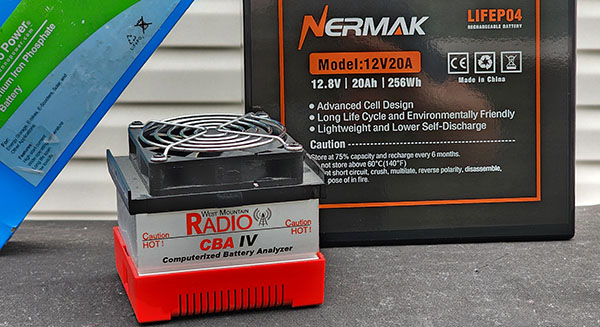I am pleased to announce the availability of the 60-15m QMX version, which has been requested multiple times by POTA and SOTA operators.
Note that there will be a few days' delay; the Rev 4 QMX boards will allegedly arrive here today according to the cargo company contracted locally by FedEx. But there will be some work to pack kits and program bootloader etc. I will also prepare a Rev 4 assembly manual update which will include the assembly instructions for the 60-15m version.
Friday, April 26, 2024
15-60m version of QMX now available for order
Thursday, April 25, 2024
The KX2 rides to Goethe State Park
A new set of paddles and an inductive helper for my 17-ft whip both rode shotgun with me for about an hour on a beautiful Florida morning.
Everything about the kit made for a quick and easy set-up...and that is my goal: 2 minutes till "On The Air" and 2 minutes to "Back on the road".
The KX2 is probably the 2nd fastest rig to put on the air, second only to the KH1. But its effectiveness (due to full 10-80m coverage) trounces the KH1.
The weather was great and it was hard to stop - I wanted to keep riding, despite having taken the long way to the park. Traffic in Inverness and Dunnellon was moving at the speed of a tax refund but it was clear sailing after that with very few cars for many miles. This is the quiet part of Florida.
I may have gotten a bit of a late start for 40m activity so I don't know how to interpret the fact that I only made a single contact on that band. I'll return earlier (or in the evening) for another attempt with the 40m coil.
.
.
Saturday, April 13, 2024
Most "smuggle-able" radio?
I know you can see it...but the only thing airport agents see is camera gear.
Nikon, Canon, Olympus...they all make camera gear - nothing to see here.
After my trip to Ecuador last year, several people emailed to ask me about getting my gear through customs. Any problems?
Ditto with a recent Caribbean cruise and a trip to Nova Scotia.
My radio at the time was either an IC-705. It looks like a radio, not a camera.
I had permission from the relevant entities to bring a radio on all three trips and that was good enough for me. I didn't go out of my way to prove that I had permission, nor did I do anything that would cause a customs official to ask if I had it.
If they'd asked, I would have answered honestly - my job was to cause them to not ask.
To do this, I placed the radio in plain sight - right in my camera bag, which was hand-searched at my request.
Thursday, April 11, 2024
Comparing prices of two 20AH LiFePO4 batteries: $60 vs. $265
For a bit over a year now, I've had a Bioenno and a Nermak battery - both are 12AH - and have used them at least weekly for POTA activity and as my in-shack 12V power supply.
Sunday, April 7, 2024
Vicksburg National Military Park (US-0723)
.jpg) |
| Drone photo of courthouse |
We road-tripped there a few days ago and spent three nights in an old B&B that, at one time, housed Jefferson Davis and other southern statesmen from a bygone era.
There are a number of museums in town and you can easily determine the sympathies of the organizations running them by how they portray events prior to and during the Civil War. If you go, the two museums you must see are the Vicksburg Civil War Museum and the Old Courthouse Museum.
Both are excellent, in different ways, and I'll leave it to the visitor to interpret them as they see fit without further description here.
The courthouse is, for photographic purposes, the town center and was the object of a few clicks of my camera's shutter and of several drone flights.
Parts of the city look as if the Civil War ended just a few years ago. This is not by design, it is simply urban decay in one of the poorest states in the US. You'll see it at the beginning of the video (below). Such contrast...beautiful stately old buildings, surrounded by modern ruin.The battlefield that comprises the POTA site is north of town and contains a 17-mile (28km) road that allows one to visit many memorials and other sites that explain the battle and 47-day siege that took place here in 1863, leading to the city's surrender.
I activated the park from two locations - both were good but not perfect.




